We might think of the shady areas in our gardens as voids or black holes where little grows, but that’s far from the truth. There’s no reason to give up and plant only hostas or astilbes when our native flora can fit the bill and also help wildlife. Here are some self-spreading choices for the darker and out-of-the-way areas of your landscape that will make you feel like a gardening rock star.
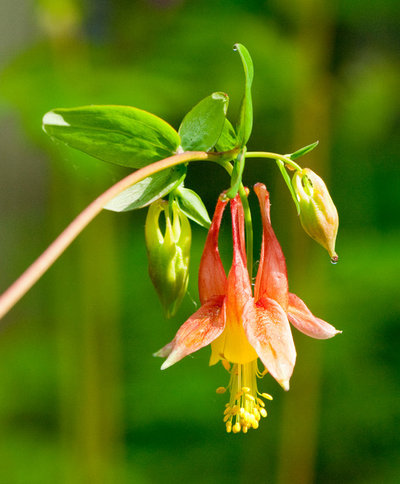
Holm Design & Consulting LLC
1. Red Columbine(
Aquilegia canadensis)
Native from North Dakota south to Texas and east to the Atlantic
From mid to late spring, red columbine’s bright red and yellow flowers light up even the darkest corners. Delicate in both bloom and foliage, red columbine looks great when planted in masses — which is exactly how it grows in its native woodland conditions — and it will spread out by seed each successive year. Red columbine can take a good deal of sun to mostly shady conditions, though a dappled site may be best. It prefers clay to rocky or sandy soil, moist or dry.
Where it will grow: Hardy to minus 40 degrees Fahrenheit, or minus 40 degrees Celsius (USDA zones 3 to 7; find your zone)
Water requirement: Needs no additional watering once established
Light requirement: Partial shade to full sun
Mature size: 1 foot to 2 feet tall and 1 foot wide
See how to grow red columbine
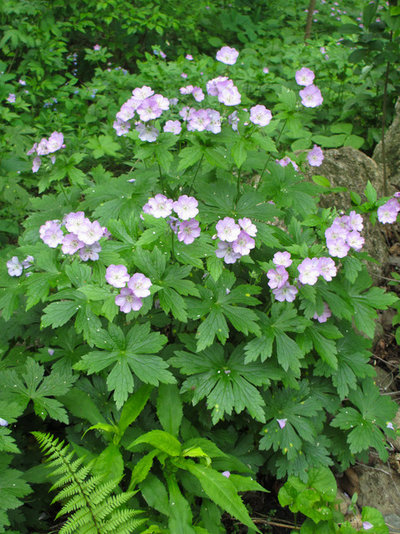
Holm Design & Consulting LLC
2. Wild Geranium (
Geranium maculatum)
Native from eastern North Dakota south to eastern Texas and east from Maine to the Florida Panhandle
Wild geranium blooms from midspring to midsummer. Like red columbine, wild geranium also spreads by seeds — which are catapulted from the plant when ripe. This woodland perennial prefers a rich, loamy soil but can be fairly adaptable. In fact, though it’s great for partly sunny and dappled-light conditions, it will do fine in full sun if the soil remains consistently moist.
Where it will grow: Hardy to minus 42 degrees Fahrenheit, or minus 41 degrees Celsius (zones 2 to 9)
Water requirement: Medium
Light requirement: Partial sun to shade
Mature size: 1 foot to 3 feet tall and 1 foot to 2 feet wide
See how to grow wild geranium
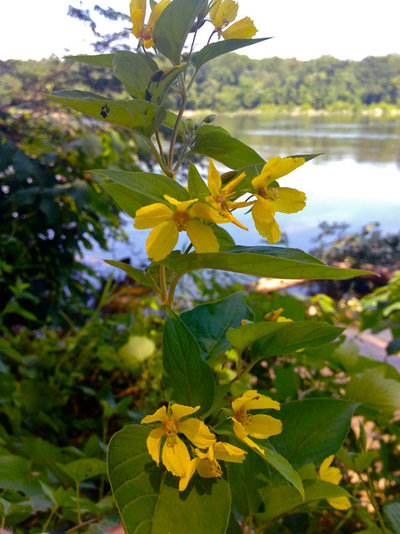 Photo by Fritz Flohr Reynolds3. Fringed Loosestrife
Photo by Fritz Flohr Reynolds3. Fringed Loosestrife (
Lysimachia ciliata)
Native from the Pacific Northwest south into Colorado and Texas and east, from Maine south to Florida
Yellow flowers top the 3-foot-tall stems in midsummer. Spreading by underground rhizomes, this shade-tolerant native will pop up in delightfully surprising places as it slowly colonizes wet to medium-moisture areas where little else grows. Loam is ideal, but this plant will do fine in clay. Fringed loosestrife also works in sunny, moist locations, and it can help prevent erosion.
Where it will grow: Hardy to minus 40 degrees Fahrenheit, or minus 40 degrees Celsius (zones 3 to 9)
Water requirement: Medium to boggy
Light requirement: Full sun to full shade
Mature size: 2 to 3 feet tall and wide
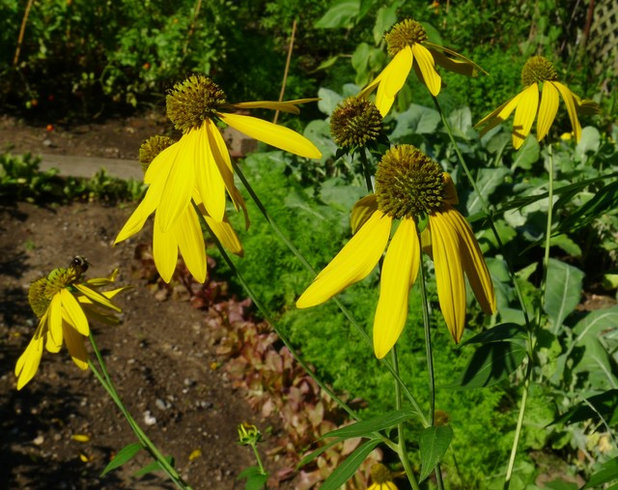 Photo by chipmunk_1
Photo by chipmunk_1
4. Cutleaf Coneflower(
Rudbeckia laciniata)
Native in the Rocky Mountain region from Montana south to Arizona and New Mexico; also native from North Dakota south to Oklahoma and all parts east, from Louisiana and Florida north to Maine.
Cutleaf coneflower blooms from midsummer to early fall. This may be one of the more aggressive species on the list, but that may make it ideal for larger garden areas you don’t know what to do with. Underground rhizomes ensure this plant rises in new areas each year, and rise it does, to a height of 7 feet when in bloom. Like other plants on this list, the more sun this plant gets, the more moisture it will need. Most any soil seems to suit it fine.
Where it will grow: Hardy to minus 40 degrees Fahrenheit, or minus 40 degrees Celsius (zones 3 to 9)
Water requirement: Medium to moist
Light requirement: Full sun to full shade
Mature size: 4 to 8 feet tall and 2 to 3 feet wide
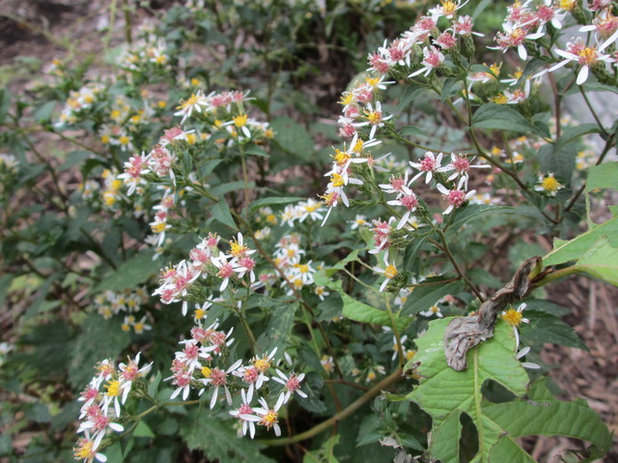
Benjamin Vogt / Monarch Gardens
5. Calico Aster (
Symphyotrichum lateriflorum)
Native from Minnesota to eastern Texas and all points east
Calico aster lives up to its name, with yellow flower centers that turn pink as the early-fall blooming period moves along. Combined with zigzag goldenrod (
Solidago flexicaulis), seen in the next photo, it will attract a number of diverse pollinators. In full shade, a medium to dry clay-loam soil mix is perfect; moisture is key in sunnier sites.
Where it will grow: Hardy to minus 40 degrees Fahrenheit, or minus 40 degrees Celsius (zones 3 to 9)
Water requirement: Medium; prefers slightly moist to slightly dry soil
Light requirement: Full sun (in moist soil) to full shade (in medium to dry soil)
Mature size: 2 to 3 feet tall and 2 feet wide; sometimes 4 feet tall in loamy soil
See how to grow calico aster
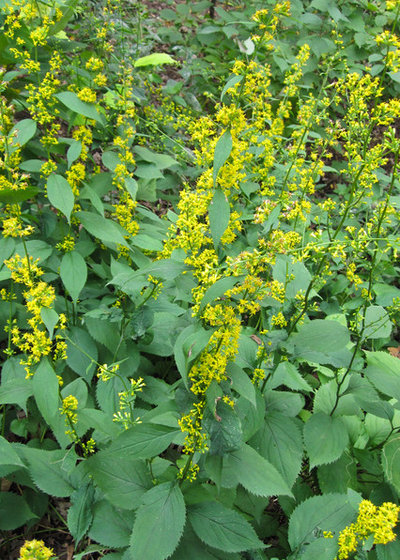
Holm Design & Consulting LLC
6. Zigzag Goldenrod (
Solidago flexicaulis)
Native from Minnesota south to Arkansas and east, from Maine south to northern Georgia and Alabama
Yes, there’s a goldenrod for full shade, and no, goldenrod doesn’t cause hay fever — ragweed does. Early fall brings a bright, very fragrant floral display that lasts up to two weeks. Clay-loam to clay soil will keep this creeping plant in check, but when you see zigzag goldenrod in bloom, you won’t want to inhibit it. Like so many plants on this list that are site-adaptable, the more sun it gets, the more moisture the soil should contain.
Where it will grow: Hardy to minus 45 degrees Fahrenheit, or minus 43 degrees Celsius (zones 2 to 8)
Water requirement: Medium
Light requirement: Shade to full sun
Mature size: 2 to 4 feet tall and 1½ to 2 feet wide
See how to grow zigzag goldenrod
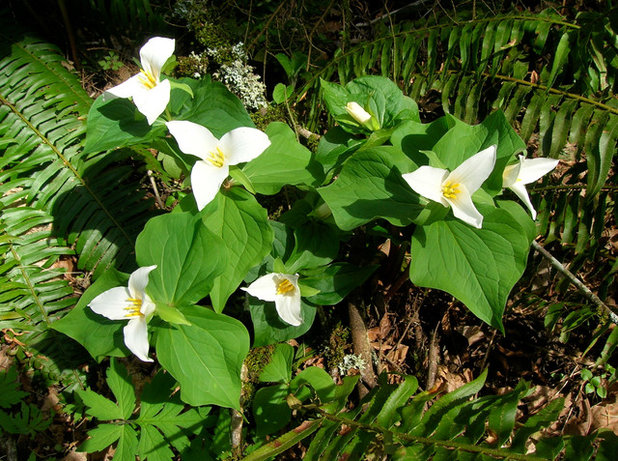
Kate Bryant
7. Pacific Trillium(
Trillium ovatum)
Native to western North America, from British Columbia and Alberta south through Washington, Oregon, Montana, Wyoming, northern Colorado and California
This early bloomer is much appreciated by garden pollinators, with its bright white flowers appearing as early as late February or as late as early April and lasting many weeks. It prefers well-drained, acidic woodland soil and prefers some morning sun or dappled shade. Though it won’t compete well against aggressive rooters, it will reseed and grow in size over time through underground rhizomes.
Where it will grow: Hardy to minus 20 degrees Fahrenheit, or minus 28.9 degrees Celsius (zones 5 to 8)
Water requirement: Little to no supplemental summer water is required once the plant is established in the Pacific Northwest; may require summer water in hotter climates
Light requirement: Morning sun or dappled shade; protection from hot afternoon sun is best
Mature size: 1 foot to 1½ feet tall and wide over many years
See how to grow Pacific trillium
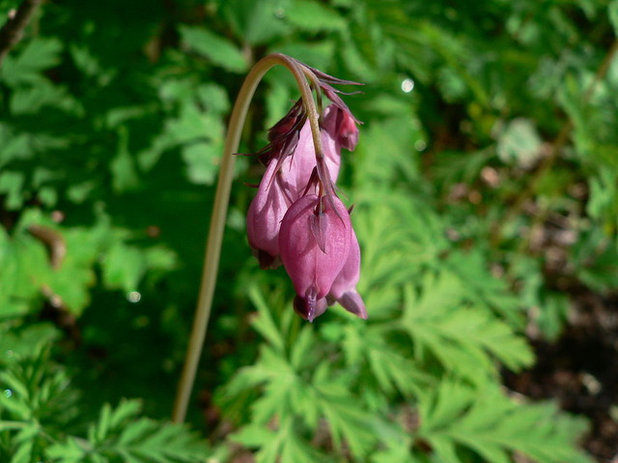 8. Western Bleeding Heart
8. Western Bleeding Heart(
Dicentra formosa)
Native to moist woodlands of the Pacific Northwest, from British Columbia to California
Spring-blooming western bleeding heart is a delicate-looking Northwest native with a tough nature. These woodland plants thrive in the fertile, moist soil of the forest floor, their pink heart-shaped flowers poking through their fern-like foliage. Plant western bleeding heart in clusters — it spreads by seeds and rhizomes, so it will fill out a shady garden corner rather easily.
Where it will grow: Hardy to minus 30 degrees Fahrenheit, or minus 34.4 degrees Celsius (zones 4 to 8)
Water requirement: Prefers moist, fertile soil but is surprisingly drought-tolerant in summer
Light requirement: Dappled light; morning sun with afternoon shade
Mature size: 1 foot tall and wide
See how to grow western bleeding heart
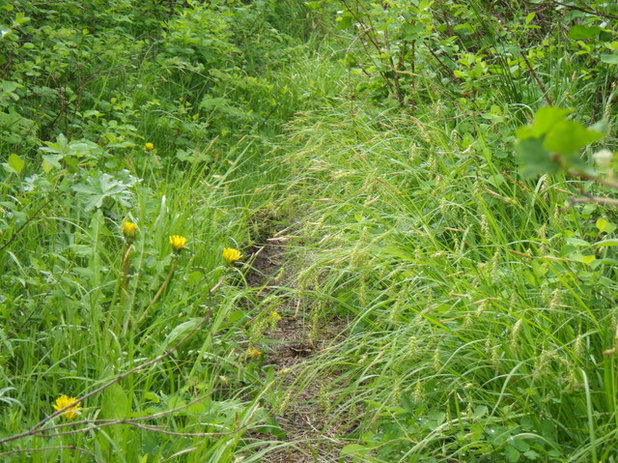 9. Sedges
9. Sedges(
Carex spp.)
Various species native to North America
We have many adaptable native sedges that would work great in concert with the above flowers. Why incorporate sedges? They act as a living green mulch that helps outcompete weeds and conserves soil moisture, adding another layer of visual interest and creating habitat for wildlife too.
A few species that might work in shady corners include: shortbeak sedge (
Carex brevior), Sprengel’s sedge (
C. sprengelii) and bristleleaf sedge (
C. eburnea).
These sedges, like so many others, are very adaptable. Usually, the more sun they receive, the more moisture they need.
Planting Tips - In general, the richer and looser the soil, the faster these plants will colonize. I grow in what is essentially potter’s clay, which is rich in nutrients but poor in drainage and water retention. The clay will slow runners, whereas a loose loam will encourage them.
- When choosing how many plants to dig in, consider your soil, the size of your garden, how fast you want a thick garden and if you want the garden to help with things like erosion.
- There’s a difference between aggressive and invasive plants. Those included here could be considered aggressive in ideal growing conditions, and yet that quality is what makes them great competitors against exotic invasive plants. It also makes them low-maintenance for trouble areas you don’t want to mess with continuously.
Native Plants 101





